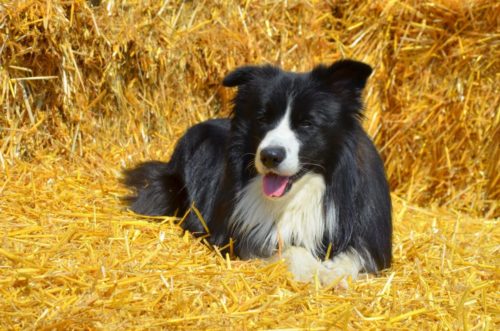Dogs develop allergies just like people. Similar to humans, they can be allergic to many things in their environment. This includes their food.
Dogs with food allergies typically benefit from a hypoallergenic diet. Hypoallergenic diets for dogs are an excellent way to alleviate irritating symptoms for our four-legged companions suffering from food allergies.
There are several things to keep in mind before trying a hypoallergenic diet for your pup. You need to know what food allergies in dogs are and what symptoms to look for. You should also know how to test your dog for food allergies. You should know what a hypoallergenic diet is and what is just a marketing gimmick.
What are Food Allergies in Dogs?
Food allergies are triggered when a dog’s immune system misidentifies a food ingredient as an invader. The body launches an immune response and you may notice symptoms of irritation in your dog. These symptoms can range from mild to severe. You should always consult with your dog’s vet if you notice any of these symptoms bothering your dog.
Surprisingly, food allergies in dogs are not all that common. It’s more likely that your pup is suffering from a different condition that shares the same symptoms as food allergies.
Common Symptoms of Food Allergies in Dogs
Dogs with food allergies will show symptoms like itchy skin, ear infections, or skin infections. These symptoms can also be caused by other common allergies such as dust mites, pollen, or fleas. If you see your dog scratching you need to get to the root of the cause in order to effectively treat it.
Scratching isn’t the only way your dog will tell you that they’re allergic to their food. Food allergy symptoms manifest in different ways other than skin irritations. Some dogs experience vomiting, diarrhea, or gas from their allergy. These symptoms can be mistaken for other causes like intestinal parasites or bacterial infections. If your dog is experiencing frequent gastrointestinal problems then it’s possible that they have a food allergy, but the dog could potentially have a condition unrelated to their diet.
As you can see, food allergy symptoms are similar to many other ailments. If your dog is exhibiting any of these common symptoms and you suspect food allergies then you should get your vet involved so other conditions can be ruled out before trying a hypoallergenic diet. Hypoallergenic diets for dogs can reduce or eliminate these symptoms for dogs with food allergies, but it won’t help a dog that is suffering from a condition unrelated to their diet.
For example, if your dog has internal parasites then a hypoallergenic diet will not eliminate their upset stomach and vomiting. The dog needs to be treated for the specific parasite instead with a medication approved by your veterinarian. If you attempt to diagnose your dog yourself then you could be treating the wrong condition and letting the problem get worse.
Common Allergens
Dogs can be allergic to any number of proteins or carbohydrates in their food. Dogs are all unique and so are their allergies. Your dog might be allergic to one ingredient or many foods. It’s important to note that a dog may eat the same food for years before developing an allergy.
People are often surprised to hear that grains aren’t the most common problem for food sensitive dogs. Some dogs are allergic to grains like wheat or corn, but it’s more common for the allergy-causing ingredient to be an animal protein!
Exact allergens can vary, but there are some common ones that show up frequently in dogs with food allergies. Here are some of the most common culprits of food allergies reported in dogs:
- Chicken
- Beef
- Lamb
- Pork
- Fish
- Dairy
Diagnosing Food Allergies in Dogs
Diagnosing food allergies can be difficult. There is no simple test to determine what ingredient your dog is allergic to. The best way to diagnose your dog’s allergy is through a dietary elimination trial. This elimination method involves testing different foods that eliminate common allergens to determine which one is troubling your dog.
This is easier said than done in most cases. Let’s say that your dog’s dry food consists of chicken as the primary protein. You may naturally assume that the chicken in the food is what is causing your dog’s allergies. A closer inspection of the label reveals that the food also includes small amounts of beef and pork. Even though chicken is the primary ingredient, you still must eliminate beef and pork from the test diet. Any ingredient that has been used in your dog’s diet could be guilty of causing the allergy, not just the primary protein. To accurately determine which ingredient your dog is reacting to you need to eliminate all of the ingredients from your dog’s previous diet in the trial diet.
For these reasons, an elimination trial can be complicated. If you’re unsure of where to start with this method your vet can help you. Discuss your dog’s diet and symptoms in detail and see if your vet has any recommendations for foods to try in an elimination trial.
During the trial, you can feed your dog either a special food purchased through your vet or a vet-approved homemade diet that contains few ingredients. You should be careful to not feed your dog anything other than the approved diet. This includes treats, flavored medications, and table scraps. If you’re tempted to give your dog a treat during the trial period then give them pieces of their new diet during the day instead of a different treat. This way you can reward your dog without compromising the elimination trial.
This trial diet should be fed for at least two months. Some dogs may need a bit longer on the test diet. If an improvement is seen after this time period, then you should test the diagnosis by switching the dog back to the old diet for about two weeks. If the symptoms return then this suggests that your dog does have an allergy. Add single ingredients to the hypoallergenic diet to test which food ingredient your dog is allergic to. For example, if you think the ingredient your dog is allergic to in their old diet is beef then you can add a bit of it to the trial diet to test the diagnosis.
However, if no improvement is seen after the trial period then your dog may have a different underlying issue that is unrelated to a food allergy. It’s also possible that your dog is allergic to something in the trial diet. Either way, you should discuss your findings with your vet to determine the next step for your pup.

Each elimination diet you test should be given enough time to see results. With each new diet, you need to take a week to gradually transition your dog from their old food to the new trial food. If your dog’s symptoms get worse or your pup seems to have a severe reaction you should immediately contact your vet.
Once you’ve determined which ingredient your dog is reacting to you can eliminate it from their diet and develop a hypoallergenic diet to suit your dog’s specific needs. Don’t be discouraged if this takes awhile. Dog foods have a wide variety of proteins and ingredients. It can be difficult to pinpoint the exact ingredient or ingredients causing the reaction.
What is a Hypoallergenic Diet for Dogs?
Once you’ve determined that your dog has a food allergy through an elimination trial you can decide on a hypoallergenic diet that fits their needs. A hypoallergenic diet is much like the elimination trial diet mentioned above. When it comes to feeding your dog with food allergies you have a few options.
Over the Counter Hypoallergenic Dog Food
Before rushing out to buy a commercial dog food that is labeled for dogs with food allergies you need to consider a few things. Over the counter, hypoallergenic dog foods are typically labeled as either grain-free, gluten-free, or limited ingredient. Here is a bit about each so you know the difference.
Grain-Free
Most people think of a grain-free diet as being hypoallergenic, but that’s only true if your dog is allergic to the grain that’s eliminated in the food. Many pet food companies will market their grain-free dog food as a good diet for pets with food allergies. As stated above, grain is rarely the culprit of food allergies. Simply switching to a grain-free dog food is unlikely to help your dog with food allergies.
Gluten-Free
Some companies have embraced the gluten-free trend and market their gluten-free dog food as a healthy diet for dogs with allergies. Pet owners need to know that the instances of dogs with gluten allergies are extremely rare. It’s unlikely that switching to a gluten-free dog diet alone will ease your dog’s food allergy symptoms.
Limited-Ingredient
Another issue with some commercially made dog foods is the limited-ingredient claim. Some of these foods contain more than one protein source, making it difficult to eliminate certain ingredients from your dog’s diet. Some of these foods are produced in the same manufacturing areas where other pet foods are produced with different ingredients. Even if the limited-ingredient food does not have a certain ingredient on the label it is possible that the food has been contaminated with trace amounts of food that can cause an allergic reaction.
If you are interested in trying a dog food with any of the claims listed above you should speak with your vet first. It’s possible that an over the counter dog food can work for your situation, but you need to consider your dog’s unique allergies before making a decision. You should work with your vet to choose a food based on your dog’s specific allergies and dietary needs. Most vets will recommend either a hydrolyzed protein dog food, a novel protein dog food, or a homemade diet. Some of these are available by prescription.
Hydrolyzed Protein Dog Food
Hydrolyzed dog food can be purchased through your vet’s office. This type of food includes animal proteins that have been broken down into tiny pieces or molecules. It may also be purified to remove allergy-causing materials. In this form, the immune system should not be able to recognize the protein as an allergen. Hydrolyzed protein dog foods often rely on rice as the carbohydrate in the formula. This is because rice has a low tendency to cause allergic reactions in dogs.
Novel Protein Dog Food
A novel protein is simply a protein that is new to your dog’s diet. The diet should also include a single source of carbohydrates. Each dog is different and finding a novel protein will depend on their past diet. Some options include salmon, venison, duck, or lamb. Lamb has become more popular in dog foods lately so this may or may not be an option for your dog. Your vet can recommend a novel protein source dog food based on your dog’s needs and past diet.
Homemade Dog Food
In some cases, a homemade meal could be a good option for your dog. This allows you to control the exact ingredients that go into your dog’s food. You can also avoid contaminating the food by storing and cooking the ingredients separately. It’s advisable to enlist the help of a certified veterinary nutritionist to help you plan your dog’s home-cooked meals. It’s important that the homemade meal adheres to your dog’s dietary restrictions while still providing all the essential nutrients, vitamins, and minerals needed for a balanced diet.
Starting a Hypoallergenic Diet for your Dog
Your dog relies on you to keep him happy and healthy. If your dog is showing symptoms of having a food allergy then you need to find out what is causing the symptoms as soon as possible. Remember that patience is key when determining which food allergy your dog has.
If your dog has a food allergy there is no need to feel discouraged. Food allergy symptoms can be easily managed with a good, hypoallergenic diet. Consult with your vet to determine if your dog has food allergies and to get started on a healthy, hypoallergenic diet.




